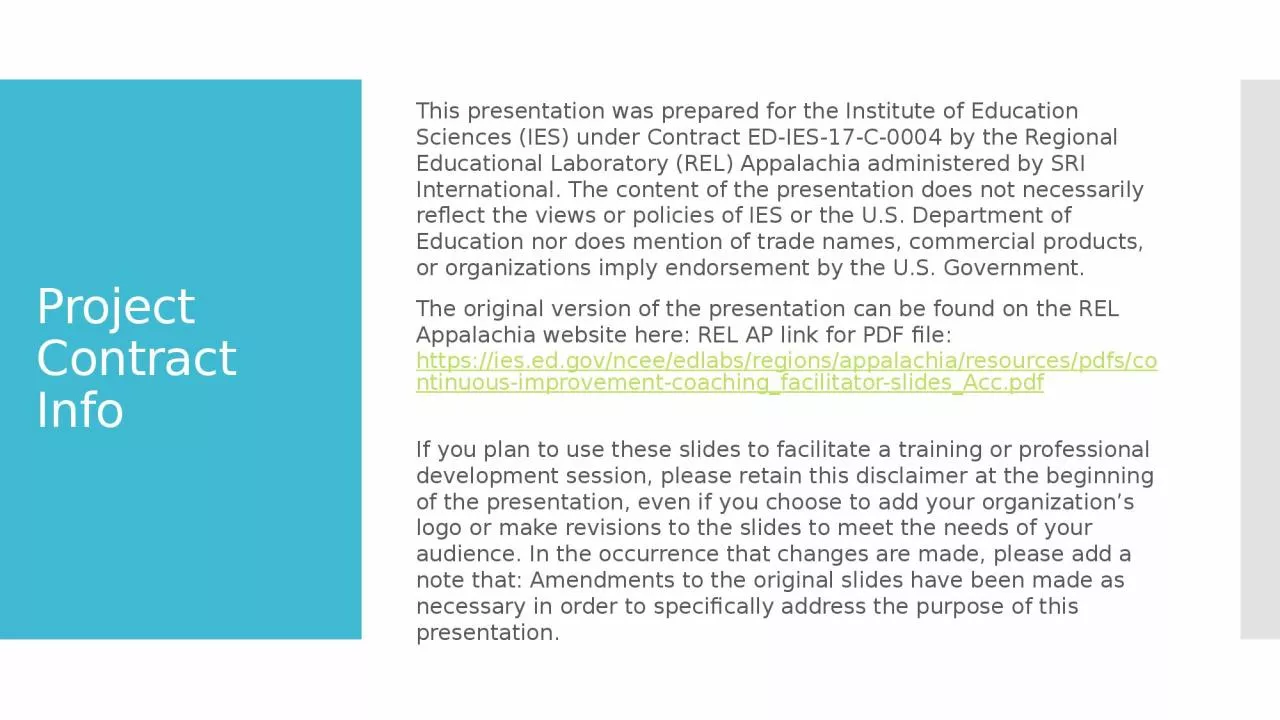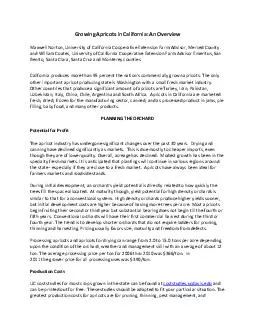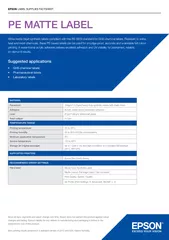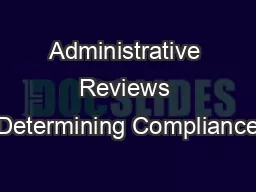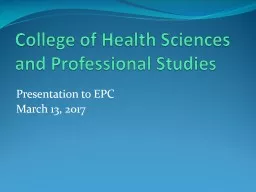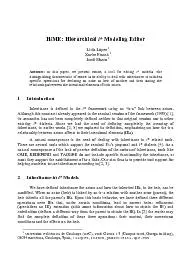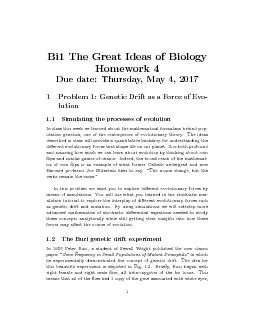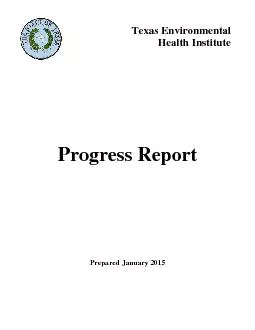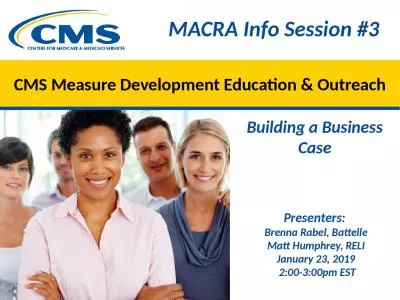PPT-Project Contract Info This presentation was prepared for the Institute of Education Sciences
Author : alis | Published Date : 2023-09-22
The original version of the presentation can be found on the REL Appalachia website here REL AP link for PDF file httpsiesedgovnceeedlabsregionsappalachiaresourcespdfscontinuousimprovementcoachingfacilitatorslidesAccpdf
Presentation Embed Code
Download Presentation
Download Presentation The PPT/PDF document "Project Contract Info This presentation..." is the property of its rightful owner. Permission is granted to download and print the materials on this website for personal, non-commercial use only, and to display it on your personal computer provided you do not modify the materials and that you retain all copyright notices contained in the materials. By downloading content from our website, you accept the terms of this agreement.
Project Contract Info This presentation was prepared for the Institute of Education Sciences: Transcript
Download Rules Of Document
"Project Contract Info This presentation was prepared for the Institute of Education Sciences"The content belongs to its owner. You may download and print it for personal use, without modification, and keep all copyright notices. By downloading, you agree to these terms.
Related Documents

